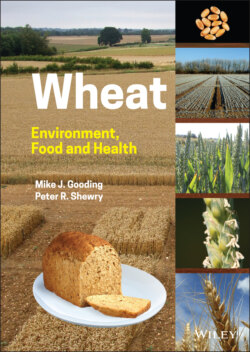Читать книгу Wheat - Peter R. Shewry - Страница 26
1.3 Wheat Evolution and Migration 1.3.1 Origin in the Fertile Crescent
ОглавлениеWheat was first used, domesticated, and farmed in and around what has become known as the Fertile Crescent. This term was first coined by J.H. Breasted (1916), when he described an area covering a narrow arc from the southeast corner of the Mediterranean Sea to the northern tip of the Persian Gulf (Figure 1.14). For him, the Fertile Crescent comprised hilly flanks limited by mountains to the north and east, by plains and a drying desert to the south, and by the sea to the west. The Fertile Crescent has been redrawn many times since Breasted (1916), reflecting new archaeological discoveries and the expansion of agriculture from its origins. Hence, over time the area scholars referred to as the Fertile Crescent became broader and extended down to include more of Mesopotamia between the Tigris and Euphrates rivers, and the Nile delta of Egypt. As well as wheat, other plants used and domesticated in the Fertile Crescent included barley, lentil (Len culinaris), pea ( Pisum sativum ), chickpea ( Cicer arietinum ), broad bean ( Vicia faba ), and flax ( Linum usitatissimum ). Rye and oats (Avena spp.) may well initially have been identified by early farmers as weeds in their wheat fields; later they became domesticated crop species, possibly as agriculture moved into cooler areas (Evans 1993; Kilian et al. 2009).
Although the climate of the Fertile Crescent has changed since the earliest cultivation, wild wheats persist in the area today. Notably, they still occur in regions where early farming settlements have been identified (Evans 1993; Nesbitt 2001). It seems likely, therefore, that early cultivated wheats were adapted to growing in the cooler and wetter winter and spring, maturing before the excessive heat and drought of summer.
Figure 1.14 The Fertile Crescent as originally described by J. H. Breasted.
Source: Redrawn from Breasted (1916).
